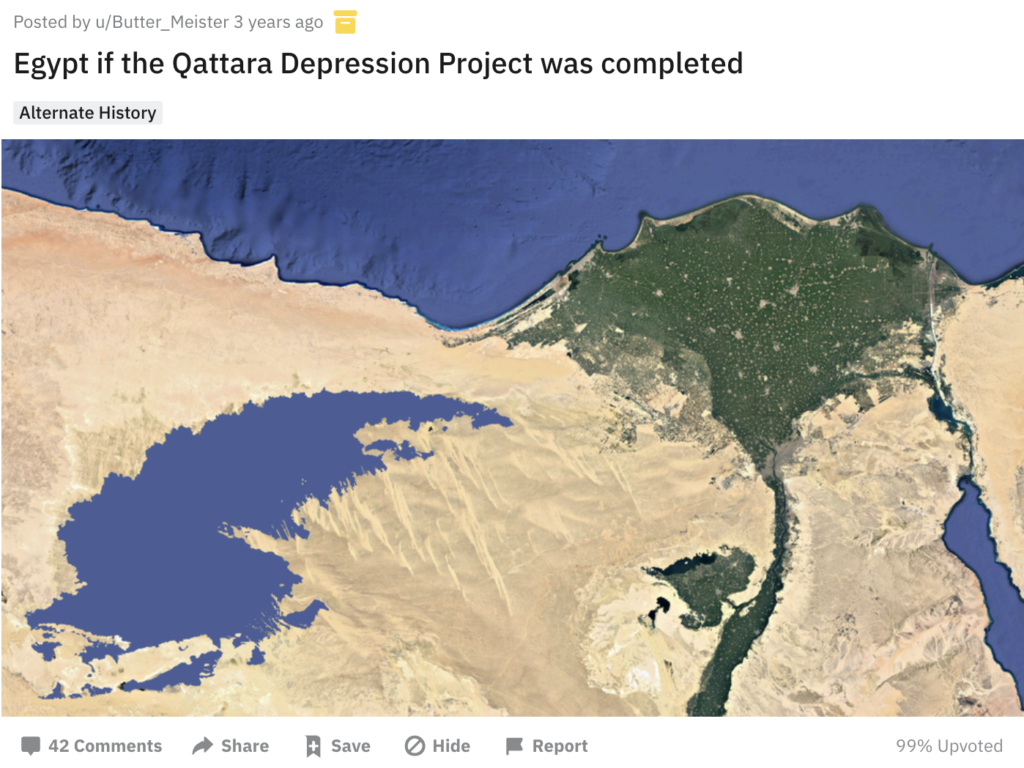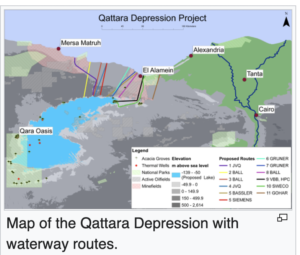More Water for the Middle East and North Africa (MENA)
However ongoing Middle East and North Africa conflicts are resolved, most families in the Middle East and North Africa will still be living in or next to deserts.
Water scarcity and conflicts within and between nations are likely to continue. More fresh water would enable Middle East and North African (MENA) agriculture to flourish, creating employment, income, and food for fast growing populations, plus reducing migration and refugee flows to Europe
A post on Judith Curry’s Climate Etc. site, titled Greening the world’s deserts, offers compelling and Earth changing ideas for bringing more life and prosperity to this very dry and very poor region of the world.
Among th world’s desert regions, the biggest crosses North Africa and the Middle East. Curry quotes an email from Gijs Graafland from the Planck Foundation who argues the technology exists for:
turning all the global deserts into high performance economic areas by the use of salt sea/ocean water for irrigation. (mainly based on salt resistant crops: the so called halophyte crops: almost all sweet water demanding crops have a halophyte ‘nephew’)
It’s about dredging a network of salt water rivers into the deserts towards millions new created diversified family farms. (or about installing seawater pipelines, if there are rocky soils and/or landscape elevation that would make salt water rivers impossible)
This model could turn many currently net food importing nations into main food suppliers of the world. (desert soils combined with salt water irrigation are very productive)…A high performance salt water resistant crop like salicornia (its beans has 30% oil and 35% protein) has great potential for desert greening…
More information can be found on http://www.desertcorp.com where you can find also some informational videos on desert greening economy here too…
Salt water based agriculture/aquaculture will change the global landscape and global food/water/ energy perspectives.
Economics of salt water rivers across deserts…
[D]redging a network of salt water rivers into the deserts? Doesn’t that seem like a crazy-expensive public works project with vast digging then burning energy to pump water hundreds of miles into North African and Middle Eastern deserts?

Well, here is where geography comes in handy. Consider that the Qattara Depression in northwest Egypt. It’s 134 meters (440 feet), below sea level and one of seven depressions in Egypt. And the Qattara Depression is just over 70 kilometers (40 miles) from the Mediterranean coast.
Qattara Depression Project: Time to Revisit? explains:

The Qattara Depression is a large low-lying area in the desert of north-west Egypt. Its lowest point is 133 meters below sea level. If the depression were flooded to sea level, the lake formed would cover nearly 20,000 km² — comparable to Lake Ontario. It would come within 55 km of the Mediterranean coast of Egypt near El Alamein.
Ever since the depression was first mapped by the British after the First World War, there have been proposals to link it to the Mediterranean by canal, tunnel, or a combination. Hydroelectric power from seawater flowing into the basin has been the primary interest. The area is hot and dry; rapid evaporation would enable a large inflow of seawater to be sustained indefinitely. The lake formed could support settlements along its shores with local fishing and salt mining economies. It could be expected to cool the region and to increase rainfall as well. Wikipedia has a fairly good article on the history of project proposals.
Qattara Depression Project: Time to Revisit? (August 10, 2016)
Water falling to the Qattara depression would generate electricity to power the pumps, according the early planners. Students can find more on the Qattara Depression Project online.
Other desert areas in North Africa and the Middle East are further below sea level. The Dead Sea is 407 meters down (1,335 feet), the lowest place on the Earth’s surface (more at Jordan: Geography and Environment page)
The Times of Israel reports on progress to build a Red Sea-Dead Sea pipeline (December, 9, 2013):
The Red Sea-Dead Sea canal, known informally as the Red-Dead project, is expected to cost $250-$400 million, to be raised from donor countries and philanthropic sources as well as a cash injection from the World Bank, the report said. Within a year, international tenders will be published for the construction of the pipeline in Jordanian territory along the Arava valley.
Though update: Project to save Dead Sea going nowhere (AL-Monitor, December 29, 2020). And, from Times of Israel: Sinking Israel-Jordan relations leave Dead Sea, a natural wonder, low and dry (November 7, 2019)
Back to Judith Curry’s Greening the world’s deserts post, part two looks at Nasser Saidi’s on Solving the GCC’s Water Crisis:
The MENA region is one of the most water-scarce regions in the world. Although home to 6.3 per cent of the world’s population (and growing), the region has access to only 1.4 per cent of the world’s renewable fresh water (and declining). To make matters worse, the region currently exploits over 75 per cent of its available renewable water resources due to its burgeoning population, increased urbanisation, mispricing of water and rapid economic growth.
Many interesting ideas for bringing more water to green the deserts of the Middle East and North Africa.
